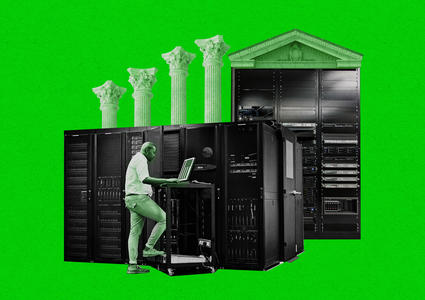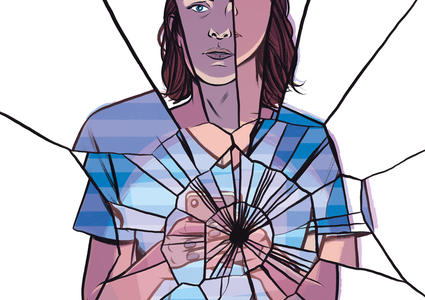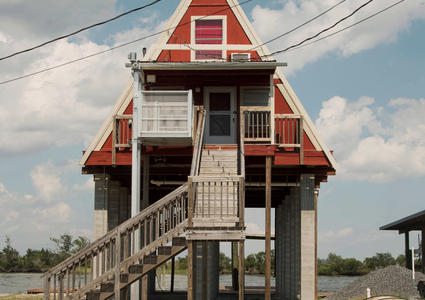Using magnetic fields and biomaterials to create implants with patient's own cells.
Cardiovascular diseases are the main cause of death worldwide, according to the World Health Organization (WHO). It affects both genders equally and more than 80 percent of cases occur in low- and middle-income countries. Therefore, one of the greatest challenges of modern medicine consists in improving the tolerance of vascular implants, which help extend the life of people with life-threatening vascular complications (such as the occlusion of a coronary artery).
The permanent exposure of these implants to the blood flow makes biocompatibility (implant acceptance by the body) to be of maximum importance for the success of the surgery. Despite important breakthroughs in biomaterials in recent years, the limited biocompatibility of stents and actual vascular grafts continues to be one of the main limiting factors of the success of surgical vascular therapies.
To combat this problem, the industrial and mechanical engineer Héctor Perea has developed a new technology that uses biomaterials and magnetic fields to create implants with cells from the patient. This technology allows coating tubular implants with vascular cells “in a safe, swift, and efficient manner”, according to Perea, using magnetic fields. With this method, it is possible to cover the interior surface of a vascular prosthesis with a layer of the patient’s own cells prior to its implantation. These cells avoid the direct contact of circulating blood with the synthetic material, improving the biocompatibility and avoiding its rejection from the body.
These type of regenerative therapies or tissue engineering approaches, combine the therapeutic benefits of cells with the the advantages of traditional, synthetic materials. Perea’s objective is to make his technology accessible to the field of vascular surgery, with the development and marketing of clinical applications for his patented technology. For this purpose, the young entrepeneur founded the medtech company Vascuzell Tecnología, only a few months ago,
The idea to establish a business arose from the development of a project that Hector Perea started during his research period at the Technical University of Munich (Germany). During that time, his proposal to use magnetic forces to position cells in a directed manner was “very well received” in this Center, that supported the feasibility study during his doctoral thesis, as he himself explains.
“The project awoke interest in doctors and companies who saw a broad spectrum of fields of application, especially in the cardiovascular area”, states the TR35. As a result of the interest, a cooperation was initiated with the Harvard-MIT Biomedical Engineering Center at the Massachusetts Institute of Technology (MIT), .
After his time as researcher, he pursued the technological development on his own, so that the technology could be commercialised as an enabling research tool to be used in laboratories and clinics. That is how the ‘endothelizer’ was born, that soon caught the eye of various hospitals and catalyzed the creation of Vascuzell.
Currently, a four-person team is working on the European certification of this product, the first of the company. “In parallel, states Perea, a cooperation with a hospital has been launched in order to complete the clinical validation of the technology.
The validation of magnetically-produced vascular implants on humans will be the definitive step to demonstrate the success of this novel technology. So far, Perea and his team have been able to develop a new patented product (the endothelizer) and to establish a company to commercialize it, which has won several awards both nationally (with the recognition as the best business idea of a Madri+d Foundation and the best business idea from the Universidad Politécnica de Madrid) and internationally (with the BioRegions Prize to the best German patent in the biotechnology sector, the prize from the German Society of Innovation for Biomedical Technology and the Klee Foundation, and Young Investigator Award at the 12th International Conference on Biomedical Engineering ICBME).
The numerous prizes received “endorse this bioengineering proposal as certainly brilliant”, in Fernando Pliego’s opinion, director of the Instituto Andaluz de Biotecnología and member of the panel of the TR35 Spain prizes. Pliego considers that Perea’s project “is enormously attractive and can represent a before and an after in the field of tubular transplants”.
Jose Manuel Lozano, professor and researcher in the field of immunology and member of the jury of TR35 Spain, assures that the project “is innovative, creative, and opens new and important paths in research applied to many aspects of human health”. “Additionally, it generates not only an understanding but also jobs specifically in the field of biomedicine and human health and a substantial improvement in the quality of life of the patients”, he adds. Another member of the TR35 jury, the president of the Board of Directors of Suanfarma Biotech, Hector Ara, states that Perea “embodies all the characteristics and conditions of a successful entrepreneur”. –Translated by Alfredo Corral


